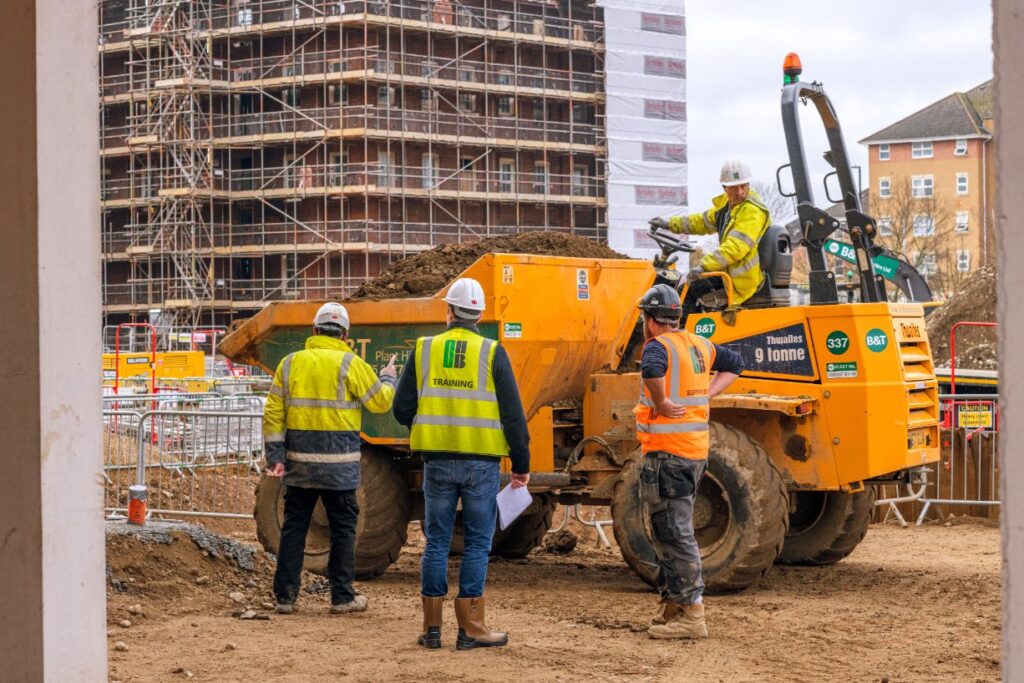Fix Radio’s Manifesto to Get Britain Building in 2024

2023 marked continual setbacks and challenges for the construction industry, with rising costs, delays in planning, or even excess red-tape, impacting the industry as a whole. Now, concerns are being raised as 85% of tradespeople are pessimistic about the future of the construction industry with more than a quarter looking for second jobs, according to BestHeating. Targets and plans to boost funding have been proposed to help the industry with the ongoing crises, however these plans did little to inspire confidence that the construction industry was receiving the help it needed to kickstart homebuilding. Whether it be battling against record material and labour prices, an historically small workforce, regulations that stifle the ability for builders to work, as well as being in the grips of a mental health crisis, the construction industry is facing significant obstacles. Clive Holland, broadcaster on Fix Radio – the UK’s only national radio station dedicated to tradespeople – explains what the UK must do to meet homebuilding targets for 2024, with a point of view from the trades.
“The government’s target of building 300,000 new homes a year is completely unrealistic and feels as if they are making as many promises as they can because the general election is just around the corner.
“Housing Secretary, Michael Gove, has said the planning system is not working and as such, a new reform bill is being unveiled as a part of this levelling up against this rhetoric regeneration bill. If the government is serious about its housebuilding target and demand, there is a lot that needs to be done.
“For me, there’s so much red tape surrounding regeneration that’s been around for a long time. Most brownfield sites already have construction, for instance, disused office blocks, public buildings, and long forgotten industrial areas, all of which could be changed if it wasn’t for the red tape.
“I think reduced rates should be given for building on the millions of acres of brownfield across the UK as an extra incentive for major housebuilders. It would reduce the nimbyism and the naysayers who do not want to see greenfield sites concreted over.
“Currently, there are well more than 1 million properties across the United Kingdom without residents, including unused second homes, whilst there are hundreds of thousands of people in need of housing – it doesn’t make sense.
“Under the current rules, it takes an average of five years for a standard housing development to go through the planning system. Since the COVID pandemic, everything has been done digitally and unfortunately taken its toll on house planning. Now, we are unable to go into planning offices and speak with someone directly meaning the whole process has become a lot slower, all because they have cut back on staff.
“We are still experiencing numerous sites being mothballed simply because resources and interest rates are too high. I think it’s all going to come to a grinding halt if we continue the way we’re going.
“The nutrient neutrality is going to allow for an additional 100,000 homes to be built in England by 2023. Yet, it often requires mitigation as part of the development either in the form of onsite treatment of wastewater and surface water runoff or by offsetting. Builders are rejoicing about nutrient neutrality now cutting a lot of the red tape, but I don’t think it will cut a lot of the problems in the future.
“Another red tape aspect that I think is a major issue is the scrapping of the four-year rule without any reasoning or replacing it with something else. This encourages the rogue element of the construction industry and can create eye sores for neighbours and the wider public – it’s a recipe for disaster.
“My problem always falls back into the hands of these ministers as none of them have experience in construction and it’s time that they should be guided by people with experience and the correct expertise.”



